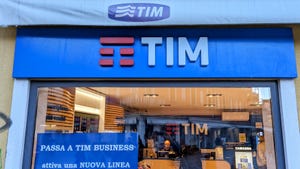UK government heralds ‘superfast’ broadband progress, BT to give some cash back
The UK government’s department for culture, media and sport has claimed its Broadband Delivery UK initiative has connected three million more premises to ‘superfast’ broadband than would have been the case without its intervention.
August 12, 2015

The UK government’s department for culture, media and sport has claimed its Broadband Delivery UK initiative has connected three million more premises to ‘superfast’ broadband than would have been the case without its intervention.
Superfast broadband is defined by speeds in excess of 24 Mbps. The DCMS reckons 83% of UK premises currently have access to superfast. BDUK was first announced back in 2010 and in 2013 revealed its targets, which include superfast broadband access for 90% of UK premises by 2016 and 95% by 2017, both of which are apparently still on course to be achieved.
In the 2013 announcement the government pledged to invest over £1 billion mainly on these superfast broadband targets, which have been pursued in partnership with BT. For some reason BT is now handing over £129 million, which will be made available to local authorities. This seems to merely be the return of a portion of the public funds BT received to do the work due to a higher than anticipated subscriber uptake. In effect the tax payer was underwriting BT’s business risk and only now that the risk has gone do we get some money back.
“It’s fantastic to see that the rollout of superfast broadband is now delivering for customers and for the taxpayer,” said Culture Secretary John Whittingdale. “The levels of people taking up superfast broadband in areas where we invested public money are beyond our expectations, and BT is now reimbursing the public purse to deliver further coverage across the UK. This now means that BT will be providing up to £129m cashback for some of the most hard to reach areas.
“The money is being made available as a result of a clause in the contracts BT agreed with government and local authorities that allows the funding BT has received to be returned or reinvested into further coverage if take-up is better than the 20 per cent expected in BT’s original business case. The higher take up rate to date has resulted in BT making a new business case assumption of reaching 30 per cent take-up in these areas.
Twenty three million premises are covered by BT’s open access network, with three million of those enabled under the BDUK programme,” said BT CEO Gavin Patterson. “The public have responded by taking up fibre in large numbers and that’s good news for those areas that haven’t been reached yet. It means additional funds are being released which will enable us to go even further at no extra cost to the taxpayer and earlier than expected.”
Not everyone is buying these numbers, however. Various interested parties have appeared in the media today talking anecdotally about how bad their coverage is, especially in rural areas. “I don’t believe the numbers,” Ian Liddell-Grainger, Conservative MP for Bridgwater and West Somerset told the FT. “In west Somerset I should think coverage is about 40 per cent.”
Visit the world’s leading conference and exhibition focused on fixed mobile convergence – Broadband World Forum 2015 – in London on 20-22 October.

About the Author
You May Also Like










.png?width=300&auto=webp&quality=80&disable=upscale)


_1.jpg?width=300&auto=webp&quality=80&disable=upscale)